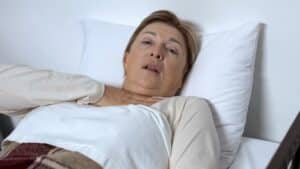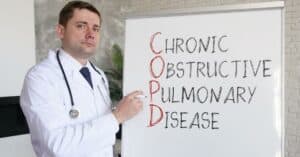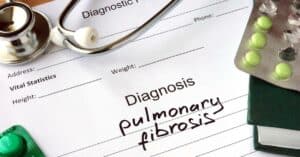As you know, chronic obstructive pulmonary disease (COPD) affects everyone differently and at varying rates of progression.
Stage 1 COPD, or mild stage COPD, is categorized by a forced expiratory volume in one second (FEV1) of about 80 percent or more of normal lung capacity based on the GOLD System, and stage 2 COPD is categorized with a FEV1 between 50 and 80 percent of normal lung capacity.
In fact, there are four total COPD stages. After learning about COPD prognosis and life expectancy, stage 1 and stage 2 COPD, it’s time to take a closer look at stage 3 COPD.
Determining Stage 3 COPD
The COPD stages range from mild to very severe. At this point, you’ve probably had lung function testing, such as pulmonary function tests, spirometry, and exercise tolerance testing.
Your doctor will perform these types of tests, take a detailed medical history, and consider how COPD affects your life.
If you’re in stage 3 COPD, you’re likely experiencing significant symptoms and changes in your pulmonary health and overall condition.
Determining stage 3 COPD is similar to determining stage 1 and stage 2 COPD. Your doctor may use the GOLD System and the BODE Index to categorize your stage of COPD.
In the GOLD System, stage 3 COPD is categorized as severe COPD with a FEV1 (forced expiratory volume in one second) between 30 and 50 percent of normal lung capacity.
Stage 3 COPD
During stage 3 COPD, you will likely experience significant lung function impairment. Many patients will experience an increase in COPD flare-ups or exacerbations.
For some people, the increase in flare-ups means they could need to be hospitalized at times as well.
Increased breathlessness and more fatigue make it difficult to perform daily tasks, enjoy your favorite activities, and exercise. Simply put, people in stage 3 COPD become exhausted more easily.
Because COPD is a progressive disease, it will continue to worsen over time. At this stage of COPD, many people see their doctors regularly.
Stage 3 COPD Treatment Options

As your COPD progresses, you’ll likely need to have more pulmonary function tests.
Your doctor will use your lung function tests to help track your lungs and how well your COPD treatments are working.
Many doctors compare old pulmonary function tests with more recent ones. Your doctor will also keep track of your overall health. While there isn’t a cure for COPD, treatment options are available.
You and your doctor will continue working together to manage and reduce your COPD symptoms, prevent flare-ups, and modify your treatment plan. The COPD treatments you used in stage 1 COPD or stage 2 COPD might need to be changed when you’re in stage 3 COPD.
Your doctor may prescribe medications, such as combination inhalers, short and long-acting bronchodilators, oxygen therapy and pulmonary rehabilitation.
In addition to these medications and therapies, your doctor will likely recommend staying up-to-date on your flu and pneumonia vaccines to help prevent COPD flare-ups.
People with COPD are at a greater risk of catching possibly life-threatening colds, flu, viruses, and infections, so prevention is key.
In the event of a flare-up, your doctor may prescribe antibiotics, corticosteroids, and even hospitalization.
It’s important to see your doctor regularly, even if you’re feeling well. However, it’s highly important to report any changes in your lung health, breathing, COPD symptoms, or overall health to your doctor immediately.
Stage 3 COPD Lifestyle Modifications
In any stage of COPD, lifestyle modifications can help reduce your COPD flare-up risk, manage your symptoms and even improve your quality of life.
One of the most important changes you can make is to quit smoking.
In addition to quitting smoking, avoiding your triggers, getting plenty of exercise, and eating a healthy diet help people live a more active life.

Christine Kingsley, APRN is the Health and Wellness Director at the Lung Institute where she focuses on providing helpful online resources for people looking for information on various lung diseases, breathing exercises, and healthy lifestyle choices. She advocates for holistic care that involves working with your doctor to explore all options including traditional and alternative care while focusing on diet and exercise as proactive measures.









